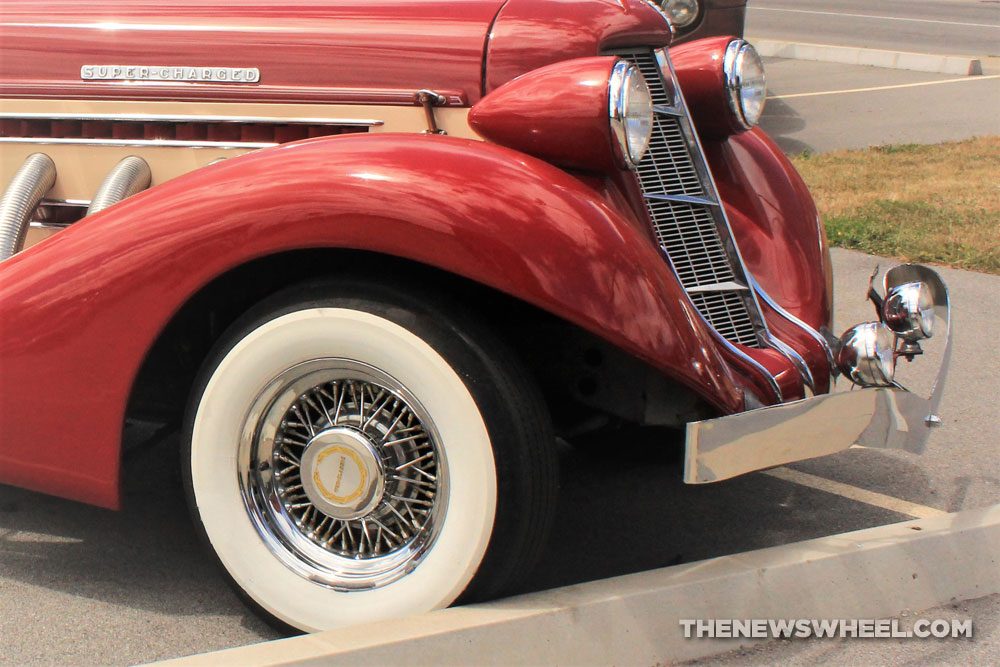
Although all standard car tires today are entirely black, whitewall tires used to be trendy in decades past. You may have seen whitewall tires attached to the wheels of a vintage hot rod or classic luxury sedan at a local cruise-in or historic film. Are the differences between blackwall versus whitewall tires purely cosmetic? Or are there underlying distinctions beyond mere fashion?
Do Your Car’s Tires Need Replaced? Here’s an easy way to tell …
The origin and appeal of whitewall tires
You’re correct in assuming that there’s something different about whitewall tires beyond just their appearance. That white ring isn’t just ivory paint across a black tire — it’s actually zinc oxide, which is totally white.
In the early age of the automobile, as they became more widespread throughout the nation and became increasingly heavy, many tire manufacturers experimented with “filler material” to strengthen rubber tires. The raw rubber would wear down easily, so it was necessary to supplement it with a durable material that would help it withstand wear, pressure, and punctures. Zinc oxide became a widespread substance used for this purpose.
The white-on-black contrast became popular for aesthetic purposes, and some automakers like Ford started offering whitewall tires as optional upgrades. The height of their popularity was from the late 1930s to the late 1960s, after which whitewall tires eventually went out of fashion.
Today, the raw rubber is melded with carbon to them a tougher, stiffer form. Plus, ply cords further bolster them.
Because of their distinct appearance and vintage popularity, whitewall tires are still fashionable in the hot rod and classic car communities. If you go to a cruise-in car show, you’ll probably see a lot of them.
Planning on Purchasing Your Classic Dream Car? Read this buyer’s guide before you buy!
Aaron is unashamed to be a native Clevelander and the proud driver of a Hyundai Veloster Turbo (which recently replaced his 1995 Saturn SC-2). He gleefully utilizes his background in theater, literature, and communication to dramatically recite his own articles to nearby youth. Mr. Widmar happily resides in Dayton, Ohio with his magnificent wife, Vicki, but is often on the road with her exploring new destinations. Aaron has high aspirations for his writing career but often gets distracted pondering the profound nature of the human condition and forgets what he was writing… See more articles by Aaron.